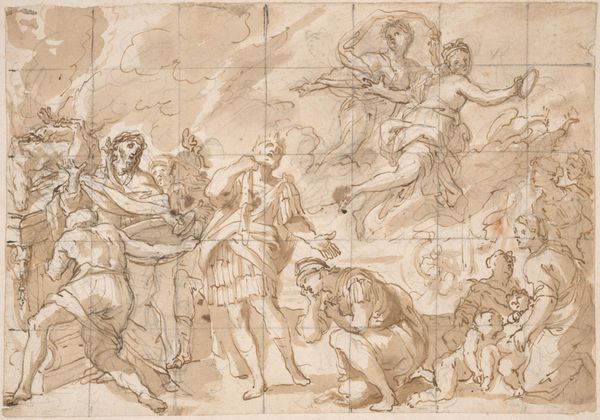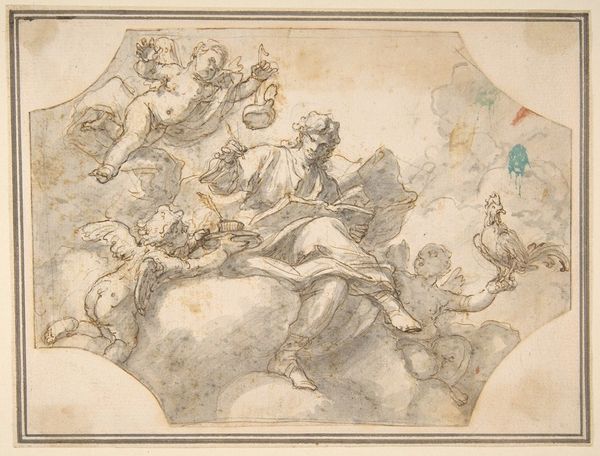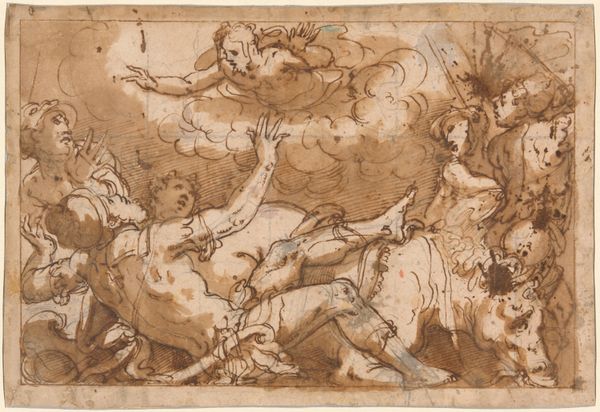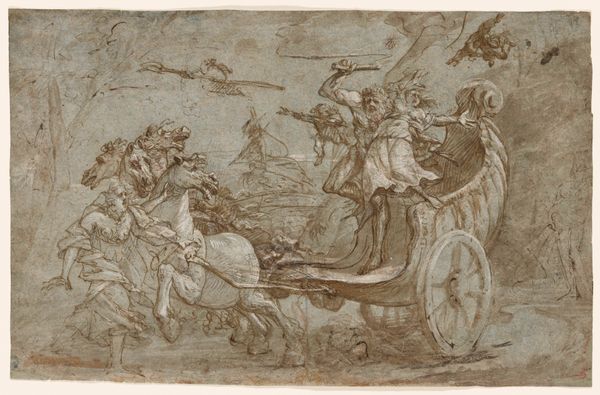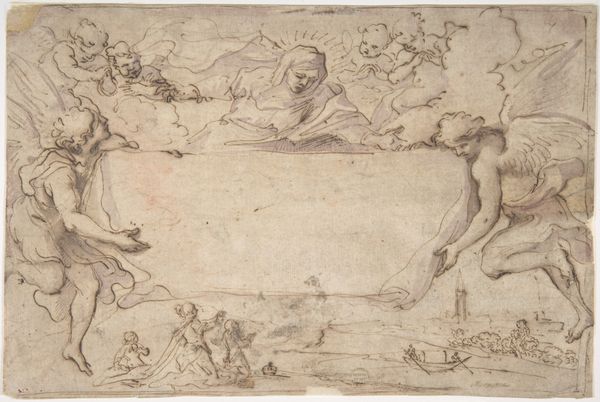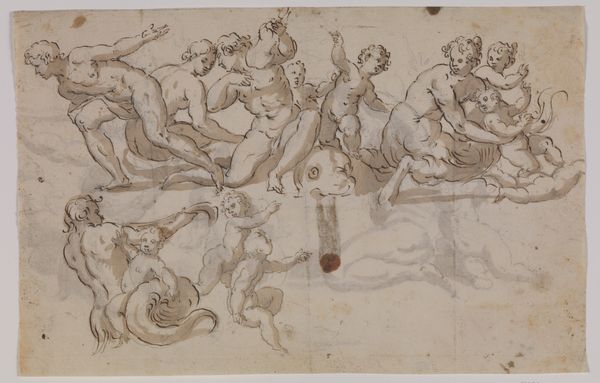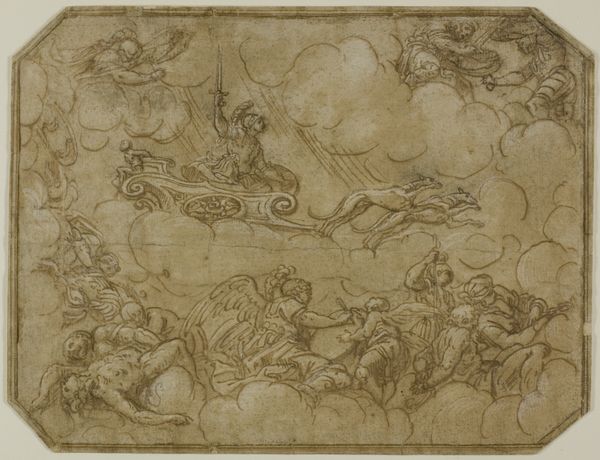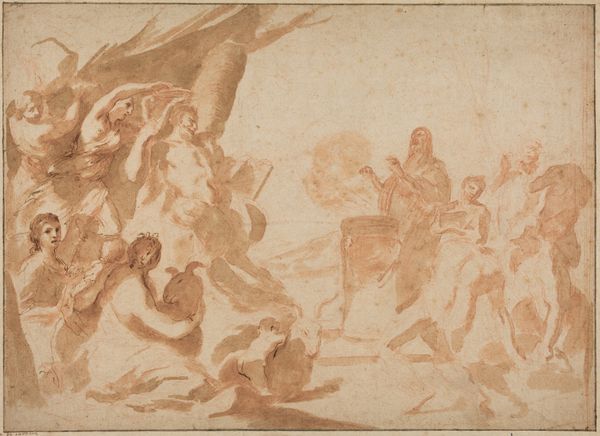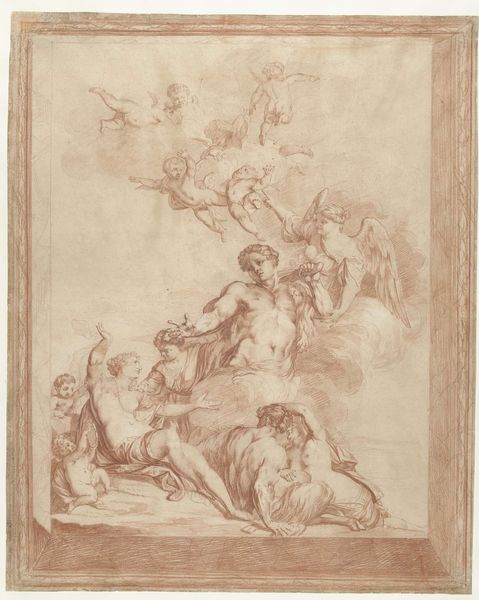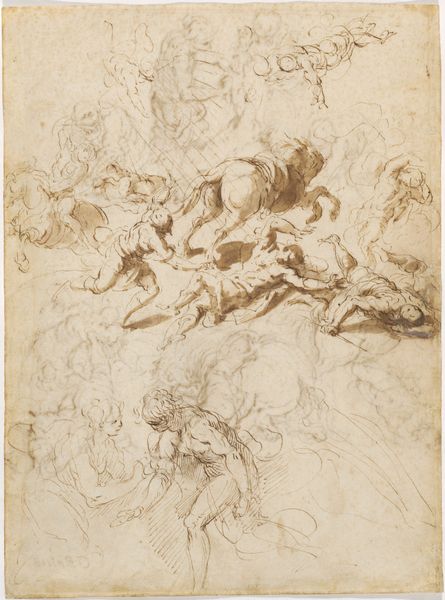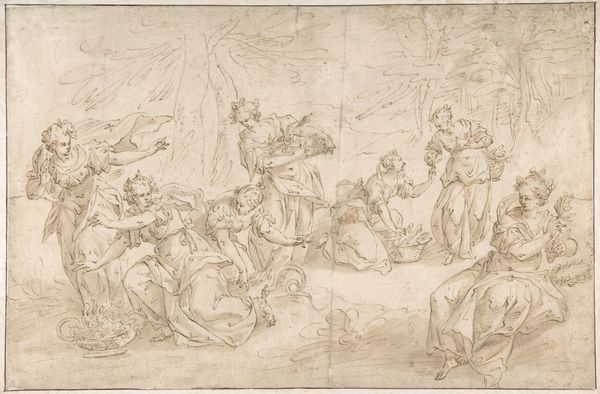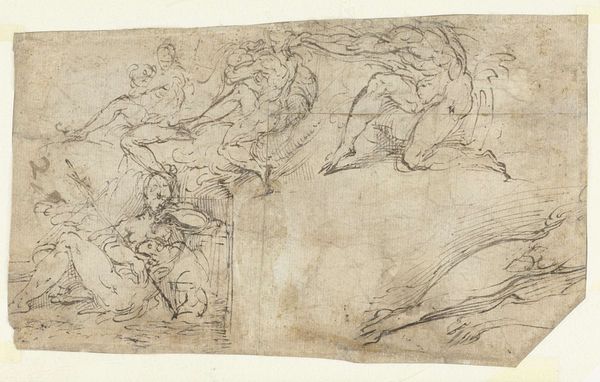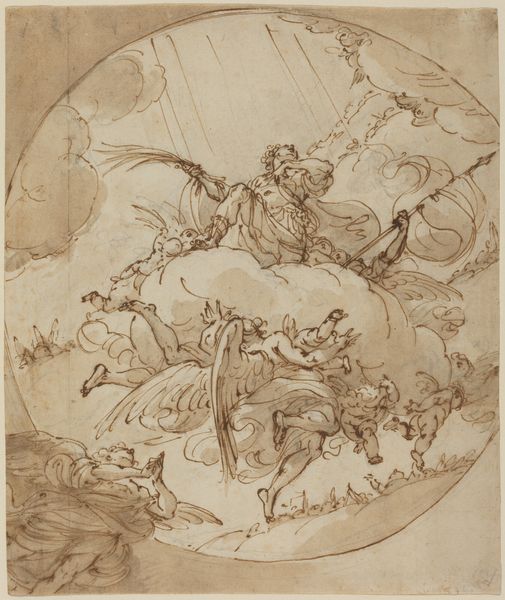
drawing, print, paper, pen
#
portrait
#
drawing
# print
#
figuration
#
paper
#
pen
#
history-painting
#
italian-renaissance
Dimensions: Sheet: 6 1/8 x 8 1/2 in. (15.5 x 21.6 cm)
Copyright: Public Domain
Curator: At first glance, the immediate impression is one of ethereal calm, despite the intense figure drawing. The soft brown ink creates an inviting dreamscape. Editor: Let’s contextualize this serene scene. We’re looking at "God the Father with Four Angels", a pen and brown ink drawing on paper, created by Bertoia, also known as Jacopo Zanguidi, between 1569 and 1571. It resides here at the Metropolitan Museum of Art. Curator: Bertoia's delicate linework emphasizes the humanity in these religious figures. Is that typical for Italian Renaissance art? The use of softer lines almost seems to democratize divinity by grounding it. Editor: The High Renaissance placed increasing importance on humanism. Gods may appear more relatable and accessible, but through institutional frameworks such as the patronage system, art became a commodity for elite audiences to view. Here we also need to think about the role of art education. Curator: The gender dynamics within religious narratives are perpetually fascinating to me, particularly depictions of God as an all-powerful male figure surrounded by, here, almost subservient angelic presences. Editor: Power in imagery served specific sociopolitical goals during the Renaissance. Depictions of God often reinforced social hierarchies and theological doctrines promoted by the Church. Understanding the public role and politics of such an artwork helps demystify the historical function of the piece. Curator: Thinking about this imagery’s modern implications, it begs the question of how Renaissance ideas of gender and power continue to affect contemporary societal expectations, as we look at an idealized patriarchal system. Editor: Exactly, and with its prominent placement within a modern museum, there’s a contemporary relevance. This historical work enters modern dialogues concerning social systems through this constant act of viewing and interpretation. Curator: Viewing artwork through the lens of cultural narratives opens doors to important conversations. Editor: By contextualizing it within the power dynamics of the time and its role in historical power structures.
Comments
No comments
Be the first to comment and join the conversation on the ultimate creative platform.
